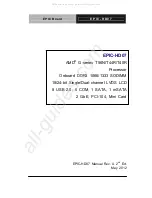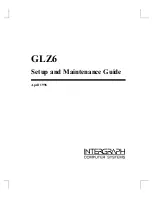
Memory Maps
http://www.motorola.com/computer/literature
2-9
2
Processor/Memory Domain
The MPC750 processor can operate in both big-endian and little-endian
mode. However, it always treats the external processor/memory bus as big-
endian by performing address rearrangement and reordering when
running in little-endian mode. The PPC registers in the Raven PCI bus
bridge controller ASIC and the Falcon memory controller chip set, as well
as DRAM, ROM/Flash, and system registers, always appear as big-endian.
Role of the Raven ASIC
Because the PCI bus is little-endian, the Raven performs byte swapping in
both directions (from PCI to memory and from the processor to PCI) to
maintain address invariance while programmed to operate in big-endian
mode with the processor and the memory subsystem.
In little-endian mode, the Raven reverse-rearranges the address for PCI-
bound accesses and rearranges the address for memory-bound accesses
(from PCI). In this case, no byte swapping is done.
PCI Domain
The PCI bus is inherently little-endian. All devices connected directly to
the PCI bus operate in little-endian mode, regardless of the mode of
operation in the processor’s domain.
PCI and Ethernet
Ethernet is also byte-stream-oriented; the byte having the lowest address
in memory is the first one to be transferred regardless of the endian mode.
Since the Raven maintains address invariance in both little-endian and big-
endian mode, no endian issues should arise for Ethernet data. However,
big-endian software must still take the byte-swapping effect into account
when accessing the registers of the PCI/Ethernet device.
Summary of Contents for MCP750HA Series
Page 161: ......



































